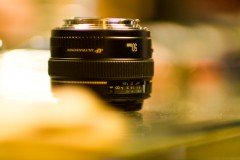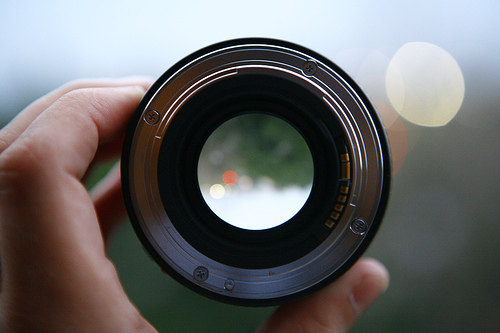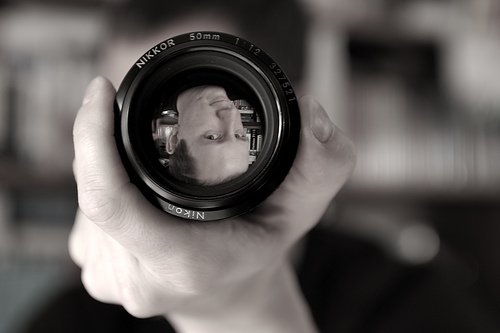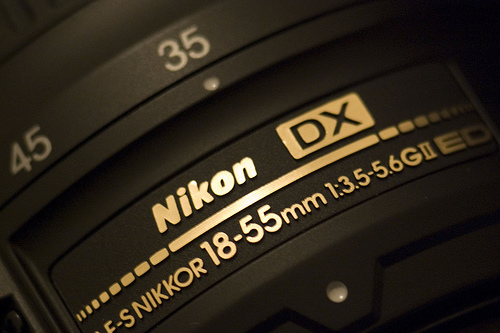
Being a digital photography aspirant, you are like most of us — always looking in for the best equipment and accessories to fit in your photography arsenal. Investing in multiple lenses especially is one of the common quest which gives birth to queries related to buying the camera lens which best suits your needs. Here are 9 things you must consider when buying the camera lenses. This list will definitely help you in understanding the lens terminology or the features offered by lens manufacturers.
-
Optical Quality
The optical quality of the lens is the first thing to check out. Though in this age almost all D/SLR lenses have excellent optics, some of the lenses manufactured by third-parties may not be have such good optical characteristics. The lens characteristics can introduce color fringing, linear distortion, coma, spherical aberration, falloff, and an endless list of scary photo-jargon. Thus comparing the lens quality in terms of MTF (Modulation Transfer Function), resolution and contrast comes in handy for picking up the best quality at hand. Cambridge color features a useful article on lens quality.

-
Lens Focal Length
The focal length of the lens determines the angle of view. The narrower the angle of view, more is its focal length resulting in a higher magnification of the lens. And lower the focal length wider the angle of view. In this respect a wide angle lens covers a wider angle of view with less magnification as compared to the telephoto lens which allows for a narrower angle of view and high magnification. Accordingly 28 mm lens will offer a wide angle of view while a 70mm lens will present a magnified version of the scene. So, when deciding to buy the lens, keep an eye on the mm numbers to get the lens you actually want — a wide angle lens for landscape photography and telephoto lens for shooting far off subjects as in the case of wildlife photography.
-
Lens Speed
You might have come across the terms fast lenses and slow lenses. This does not actually reflect the speed of the lens. The lens speed is influenced by the maximum aperture diameter (or the lens opening). The lens with the smaller minimum f-number (or larger aperture diameter) is referred to as the fast lens because it allows more to light to enter the camera. This capability of the lens allows for faster shutter speeds (which delivers better results for motion photography). The slow lens on the other hand is slow owing to the larger minimum f-number which requires slower shutter speed to gather the light. As such a lens with maximum aperture of f/2.8 or lower is faster than the with an aperture of f/5.6. Other than using fast shutter speed, the fast lenses enable you to shoot in low ambient light without using flash and gives greater control over shallow DOF (depth of field).
-
Auto Focus vs Manual Focus Lens
The auto focus lens implies an auto-focus motor to enable the camera to automatically focus on the subject. This feature of the lenses come in handy for shooting action photographs where the subject is continuously moving and focusing manually becomes much of a task (unless you are good at manual focus). The manual focus lenses on the other hand provide a focus ring to set the focus manually, however an auto-focus lens also allows for manual focus. If you are beginner, you will definitely need an auto focus lens by all means to get focused images; as also the entry level DSLRs do not feature in-body auto focus motor.
-
Prime Lens Or Zoom Lens
Prime lens is the fixed focal length lens whilst zoom lens which offers you a range of focal length to play around with. The zoom lenses enable you to comfortably zoom in and out of the scene (barring the distance between the subject), try creative techniques (like the zoom effect) and vary composition and perspective. The prime lens on the other hand outweighs the advantages of zoom lens owing to its cost, weight, speed, superior optical quality and durability. The prime lenses are optimized to work with a particular focal length which ultimately reduces the chances of geometric and optical artifacts like chromatic aberration. Owing to the simpler optics, prime lenses usually have a larger maximum aperture (smaller f-number) than zoom lenses. This makes prime lenses more suitable for indoors (owing to low light advantage), portraits (due to shallower DOF which enables you to compliment the subject with beautiful bokehs) and sports photography (because of faster shutter speed). This however does not conflict with zoom lens which is used as a general purpose lens and produces acceptable results and is handy to carry around for general subjects. The question Prime Lens Or Zoom Lens? entirely depends on the type of photography you pursue.

-
Image Stabilization
Image stabilization is a family of techniques used to reduce blurring associated with the motion of a camera during exposure. Especially when shooting at slow shutter speed or with long focal length the chances of camera shake or blur are high. Image stabilization ensures that either the camera or the lens compensates for the camera shake. The in-camera image stabilization arranges for the sensor-shift which is implemented by some of the camera manufacturers like Olympus introduced image stability feature in its E-510 DSLR body and Sony Alpha line calls it Steady Shot technique. Not all cameras provide this feature. Thus you can go in for a compatible image stabilization lens if your camera doesn’t feature image stabilization. The lens manufacturers however call the lens-based image stabilization by various names — Nikon calls it VR (Vibration Reduction), Sony refers to it as OSS (Optical Steady Shot) and Canon features it as IS (Image Stabilization).
-
Lens Mount
The lens mount is an interface between the camera body and the lens. In the camera bodies which allow interchangeable lens, the lens mount provides a locking system to connect the lens. Each camera manufacturer has designed specific lens mounts — F-mount is common for Nikon and EF / EF-S in case of Canon. Lens mounts of competing manufacturers (Nikon, Canon, Pentax, etc.) are almost always incompatible. So you are bound to mount Nikkor lenses on Nikon cameras and Canon EF / EF-S lenses with Canon DSLRs. However the lens adapters make it easy to use the lenses of other manufacturers but at the cost of some compatibility (you will need specific adapters for specific lenses) and performance issues (like losing infinity focus).
-
Camera’s Format
In digital cameras, the camera’s format refers to the size of the image sensor. Accordingly the camera manufacturers offer full-frame and crop sensor cameras with difference in the sensor sizes. While the full frame sensors are equivalent to the size of a 35 mm (36 x 24 mm) film frame, the crop sensor also known as APS-C (Advanced Photo System type-C) has an approximate size 25.1 x 16.7mm. The lens manufacturers offer lenses specifically designed for APS-C cameras to help get optimized results with general use crop sensor cameras. The APS-C lenses are lightweight and cheaper as compared to FX lenses (Nikon’s terminology for full-frame). The choice of lens is influenced by the camera’s format as well. Nikon lenses designed for full-frame cameras work fine on crop sensor cameras but vice-versa is not true (i.e you run the risk of under utilizing the frame-size with crop format lenses on full frame cameras). Also see full frame vs crop sensor cameras.

-
Brand Of Lenses
Nikkor lenses are good to go with Nikon camera body as Canon lenses are designed to work well on Canon body. It is the general assumption that using the camera body and camera lens of the same brand co-operate well with each other to give fine results. While the lenses of competing companies are often non-compatible owing to specifically designed lens mount, third party lens manufacturers provide various versions of lenses for popular camera brands. But again depending on the budget and especially for beginners it may be economical to go for third-party lenses such as Sigma and Tamaron which give acceptable to excellent image quality.
What do you look for when buying lenses?


Very well said! The nifty fifty instantly became my favorite the first time I use it. And it made me want to purchase prime lenses in the future.
I will admit, I’ve come to love my 50mm f/1.8 recently. Last shoot I did, the location was just too small for my 70-200mm f/2.8VR, so I pulled out the 50. I wouldn’t say using it made me any better of a photographer, but it did give me a new appreciation for my shorter primes.
I’ve never been a big fan of the whole “zoom with your feet” nonsense. It’s all well and good for people to keep parroting those kinds of things out, but when you move, it completely changes perspective.
Your subject could be the exact same size in the image, but shooting it at 50mm will be very different to shooting it at 105mm or at 200mm. Your subject will look pretty much exactly the same, but your environment won’t.
Having the flexibility of the zoom lets me get more control over the environment as well as my subject. But, it largely depends on what you shoot.
As I said above, the 70-200 is my lens of choice for portraits. Having zoom ability made me a better photographer because it made me think more about the scene perspective relative to my subject, that choice is taken away from you when you’re using a prime.
I don’t believe using a single prime makes you a better photographer. It just limits your choices and the number of photographs that will work. The only difference between a 70-200 and having 120 prime lenses between that focal range is that my bag is much smaller. :)